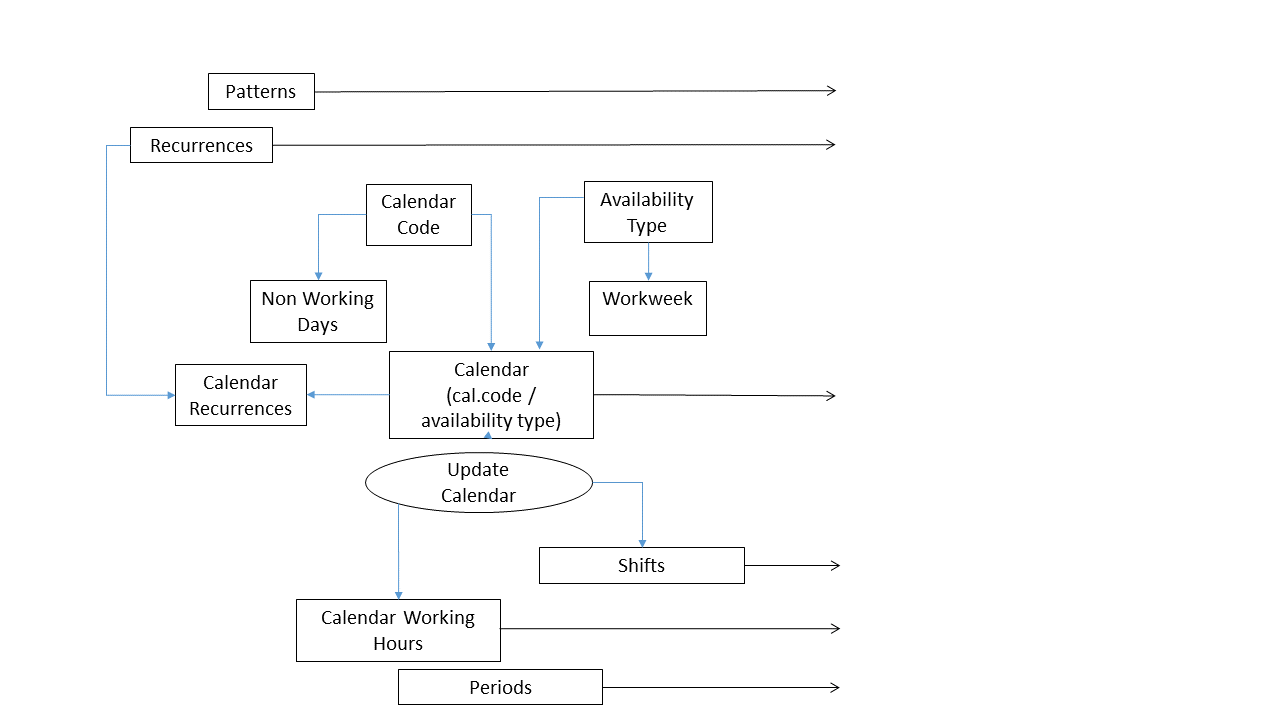| | Overview of calendars and periodsThis topic presents an overview of the Calendars and Periods module. In the Calendars and Periods module, you can define calendars and time patterns to use throughout the LN packages. Concepts In the Calendars and Periods module, you can define the following types of data, for
use in other parts of LN: | Concept | Description | | Recurrences | A recurrence is a repetitive pattern of dates, such as
“Biweekly on Mondays and Fridays”, “The 27th of each month”, or “January 1st of
each year”. Recurrences are used to build patterns and calendars. In the People package, you can use recurrences in assignments. | | Patterns | A scheme defining the day of the month, the day of the
week, and the time of the day you want an activity to be carried out. Patterns
are defined by using a combination of recurrences, exceptions, and times of
day. The Order Management and Enterprise Planning packages use patterns to define delivery moments, shipping
moments, and fixed delivery patterns. | | Calendars | Calendars define the working times or opening times over
a large range of dates. Calendars can also store efficiency-related and
capacity-related data. You use calendars to define the working times of employees, work centers, and warehouses and information on the working dates and times
of business partners, required to plan deliveries. | | Shifts | Define shifts for a calendar in order to specify the
working times of a team of employees. | | Periods | Periods divide a
year into regular intervals, such as weeks, months, or quarters. You use periods
for statistical, financial, hours accounting, planning, and cost controlling
purposes, especially in the Sales, Procurement and Project packages. |
Dependencies To help you understand the structure of this module, some of
the dependencies between the concepts are described below: | |
